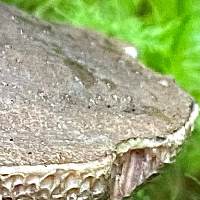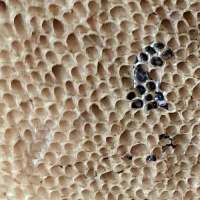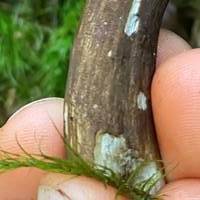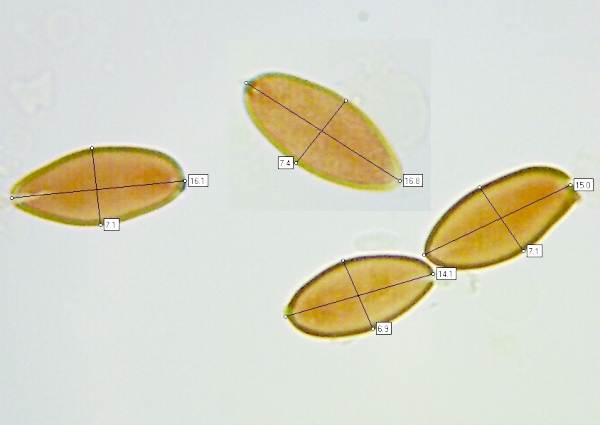Porphyrellus porphyrosporus (Fr.) E.-J. Gilbert - Dusky Bolete
Phylum: Basidiomycota - Class: Agaricomycetes - Order: Boletales - Family: Boletaceae
Distribution - Taxonomic History - Etymology - Identification - Culinary Notes - Reference Sources
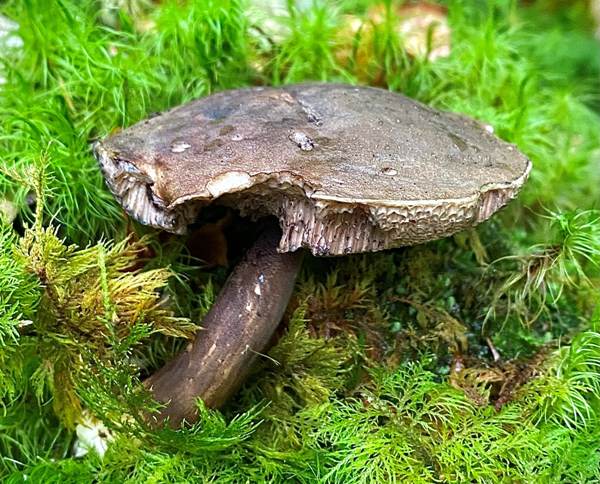
With its purple-brown cap and stipe, Porphyrellus porphyrosporus is a rather dull and sombre-looking bolete and not at all easy to spot, despite its large size. This summer and autumn species occurs under pines, often in dark woodland settings that add to the difficulty of spotting mushrooms with dark brown caps.
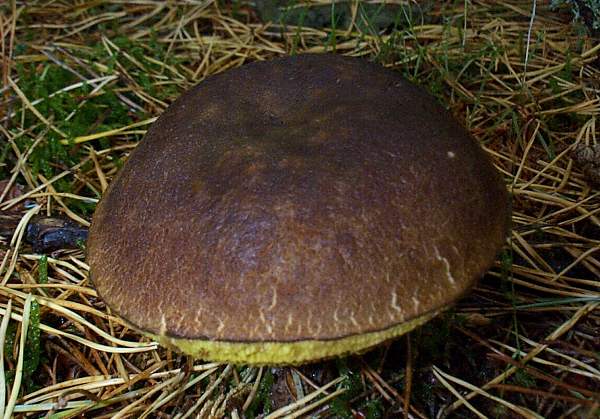
Distribution
This is a rare mushroom found in the UK, Ireland and parts of mainland Europe.
Taxonomic history
First described by Elias Magnus Fries in Boleti, Fungorum generis, illustratio, 1835, where it appeared under the scientific name Boletus porphyrosporus, the Dusky Bolete was transferred to the genus Porphyrellus 110 years later by the French mycologist Jean-Edouard Gilbert (1888 - 1954), and this remains its generally-accepted scientific name.
Among the many synonyms of Porphyrellus porphyrosporus are Boletus porphyrosporus (Fr.), Tylopilus porphyrosporus (Fr.) A.H. Sm. & Thiers, Krombholziella pseudoscaber (Secr. ex Singer), Phaeoporus porphyrosporus (Fr.) J. Bataille, and Porphyrellus pseudoscaber Secr. ex Singer.
Etymology
The Dusky Bolete gets its common name and its specific epithet from its dark purplish-brown colours. The colours of the cap, stem and spores of the Dusky Bolete make it very easy to identify.
Identification Guide
CapThis sombre mushroom has a dark brown cap with a noticeably paler margin. Initially convex, caps expand and sometimes become irregularly lobed. 6 to 15cm in diameter when fully expanded, the caps have soft buff flesh with a vinaceous tinge. |
|
Tubes and PoresThe tubes and pores are greyish-yellow at first (as in the youngish specimen shown here) but, as the fruiting body begins releasing spores, the pores turn brown. When cut or bruised, the tubes and pores turn blue-green. |
|
Stem1 to 3cm in diameter and 5 to 12cm tall, the stems of this species are tobacco brown and slightly velvety to the touch when young, becoming smooth as the fruiting body matures. The stem flesh is buff, turning slightly blue-green near the apex when cut.
|
|
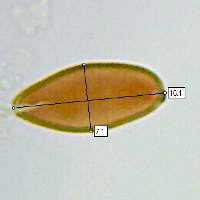 |
SporesEllipsoidal to subfusiform; smooth, thick-walled; 14-17.0 x 6.0-7.5µm. SporeVinaceous-brown. |
Odour/taste |
Unpleasant sour taste and odour. |
Habitat & Ecological role |
Mycorhizal;uUnder deciduous trees in mixed woodlands and in conifer forests. |
Season |
July to September in Britain and Ireland. |
Similar species |
The Bay Bolete, Imleria badia, is similar but with a shiny cap when fully developed; its tubes turn blue when bruised. |
Culinary Notes
This mushroom is reported to have a sour taste, and it is best treated as inedible - if not for that reason then for its rarity.
Reference Sources
Fascinated by Fungi, 2nd Edition, Pat O'Reilly 2016, reprinted by Coch-y-bonddu Books in 2022.
Dictionary of the Fungi; Paul M. Kirk, Paul F. Cannon, David W. Minter and J. A. Stalpers; CABI, 2008
Taxonomic history and synonym information on these pages is drawn from many sources but in particular from the British Mycological Society's GB Checklist of Fungi.
Acknowledgements
This page includes pictures kindly contributed by Marina Muttik.
Fascinated by Fungi. Back by popular demand, Pat O'Reilly's best-selling 450-page hardback book is available now. The latest second edition was republished with a sparkling new cover design in September 2022 by Coch-y-Bonddu Books. Full details and copies are available from the publisher's online bookshop...
